Serious Sam gets a fully path-traced RT upgrade - and it's beautiful
Extreme modding.
We've been down this route before with Quake 2, of course. Taking an ancient, relatively simple 3D game and upgrading it into a fully path-traced graphical experience can be revelatory - and that's exactly what we see with this recently released, highly modified version of Serious Sam: The First Encounter. Yes, that's TFE, not Serious Sam HD - so it's a mod of the original game, largely bound by the limitations of the 2001 release. However, as you'll see from the video and head-to-head screenshots on this page, the results of a transition to a fully path-traced experience are impressive.
To get the game working with RT, author Sultim Tsyrendashiev delivers extensive modifications - not just in terms of the renderer (which is running via the Vulkan API) but also in terms of its core art assets too. For path tracing to work and for light to propagate around a scene, textures need updating with elements like normal maps and material values - so the author of the path tracer has gone in and tweaked all the game's textures to have these characteristics. This involves a good understanding of art as well as coding because fundamentally, we want the materials to look realistic but at the same time to evoke the aesthetic of the original game. In the process, not only are materials compatible with the path-traced renderer, they are also of a much higher resolution too.
In terms of how the global illumination solution works and the ways that light and materials interact, this really is best left to the video embedded below, but the bottom line is that the GI works not just on the light bounces from the primary light source - the sun - but also from man-made light sources too, like torches and fire pits. With interiors, the challenge faced by the developer here is pronounced: the original game essentially placed what are called 'unmotivated' light sources around the levels - fake lights, essentially, to provide some level of illumination. The path-traced version of the game eliminates these unmotivated lights as presumably, they looked rather odd when path-traced. Instead, all these sections only have light coming from things like torches or fire-pits.
This means that a lot of areas designed around unmotivated lights are now pitch black in the path-traced version of the game. This would be a problem, but the author of the path tracing engine added in a player flashlight, like that one found in Serious Sam 3. So, these sections of the game now have a different gameplay feel as your flashlight illuminates these long dormant pyramids and crypts, casting shadows across the environment.
Alongside the flashlight, there are other new light sources in the path-traced renderer: power-ups, for example, are now treated as emissive surfaces and can help illuminate surrounding environments. Beyond that, dynamic lighting flares with each bullet fired and with every explosion. Weapons like the mini-gun muzzle flash cast a dancing cascade of light and shadow around the environment, the green laser bolts do much the same, and each rocket flares spectacularly as it flies and detonates into the distance. This extra spectacle when firing weapons adds some welcome extra impact, as the guns in the original were not known for their amazing animations or sound.
A final flourish comes from transparent surfaces, like water. In the original game, water surfaces were similar to those from the original Unreal: hyper blue textures to represent the look of water with moving texture and blue lights placed nearby to emphasise the watery look. In the path-traced version of the engine, water is now fully reflective - capturing the nearby environment and sky in its surface. And when looking through the water, objects refract in a realistic manner too. Sadly, the game does not support ray traced caustics from the water as seen in Minecraft RTX and instead, the same animated textures from the original game are used.
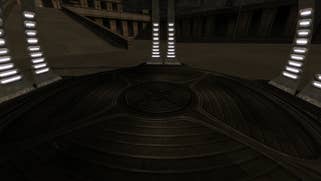
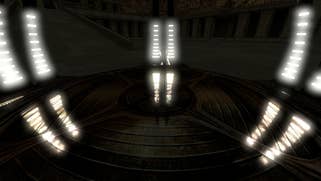
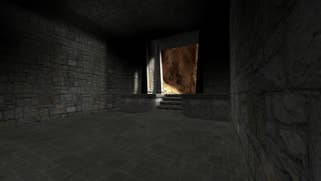
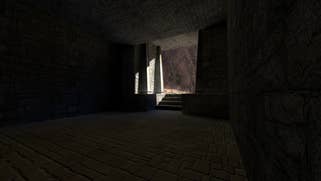
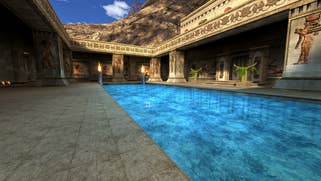
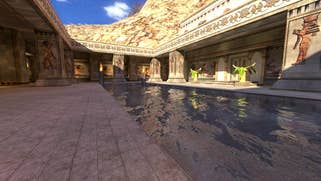
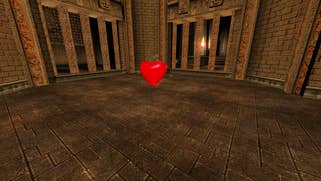
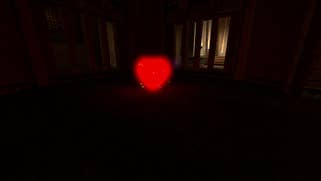
The overall effect is very impressive - and the overall aim in merging realism with the game's original aesthetic pays off nicely. However, there are some issues: for one, shiny materials like metal can have a grainy appearance in areas with low-level lighting conditions or complex light paths, so they sparkle unconvincingly the lower down the resolution ladder you go. The 'faked' volumetric approximation from the original game is also gone as the path tracer does not have a volumetric representation for its light transport. Similarly, there is no fog in the game either. Lens flares were also 'faked' in the original and aren't present in the path-traced version, which has post-process bloom instead. This bloom can really add a lot to some scenes, but in general it is rather intense by default which some players may not like - but thankfully there are options to tweak intensity.
Performance-wise, this game is heavy, but dynamic level of detail culling can help. This option removes dynamic objects in the distance from RT calculations, but since this is a path-traced game, it means objects can disappear at a distance. This setting has a moderate to high impact on GPU performance -on an RTX 3090 at 1440p over the course of a specific benchmark sequence, changing the setting to 'less' improved performance by 15 percent vs the 'full' setting. Switching down to low increased frame-rate by 32 percent - and is generally the preferred option, but indoor scenes can see varying levels of obvious pop-in. The mod is also heavy on CPU too - so keep an eye on processor utilisation. Generally, the 'less' setting should be good on modern Intel and AMD CPUs for gameplay in excess of 60fps.
Even so, many PCs will struggle to run this at high frame-rates and high resolutions. Even with optimised settings, an RTX 2060 barely manages to stabilise at 1080p30 - you need to drop down to 720p for 60fps gaming, and even then we're at the cusp. On similar settings, an RTX 3080 does the same job at 1440p, with the higher dynamic LOD setting. Regarding AMD GPUs, I did try to run Serious Sam on a Radeon RX 6800 XT, but I could not get the game to boot at all - and reading online, it seems that AMD GPUs are not fully supported yet. But when they are, that should be an interesting test case, much like Quake 2 RTX was - and in the absence of the RT remasters that were apparently in development at Nvidia's Lightspeed Studios, projects like this are very welcome indeed.










